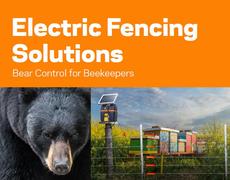Building Your Electric Fence
In 1938, the first electric fence was developed in New Zealand by Gallagher. Since that time, electric fencing systems have made farm and ranch life easier. Today, both permanent and portable electric fencing products are used all over the world.
Basics of Electric Fencing
Electric fencing is ideal for grazing or pasture management by containing animals on a selected area of pasture or crop. It also may be used to protect gardens and landscapes from animal damage.
Permanent electric fencing is economical, easy to install and easy to maintain. Temporary electric fencing is an effective temporary barrier for short-term animal control and rotational grazing.
Electric Fencing is...
- Safe: Animals remember the short, sharp but safe shock and develop respect for the fence.
- Easy to install: An electric fence takes less than half the time to build compared to traditional fence systems.
- Durable: A non-electrified fence experiences constant wear and tear under stock pressure. Because your animals learn to avoid an electrified fence, your fence will last longer and remain in good condition.
- Economical: Electric fences cost less than 50% of traditional non-electric





